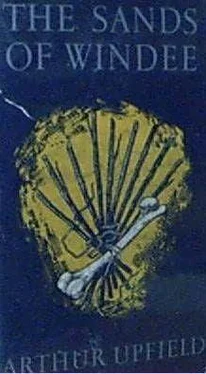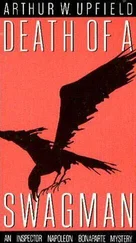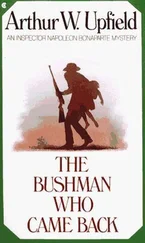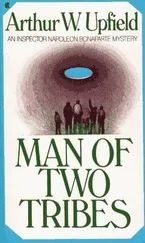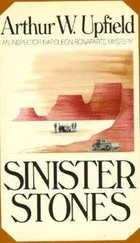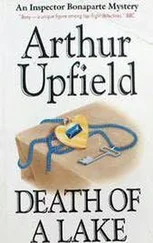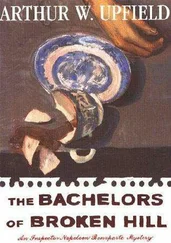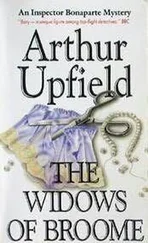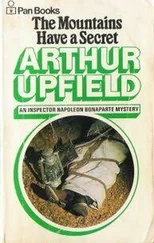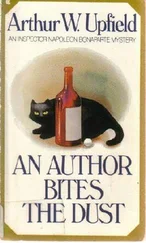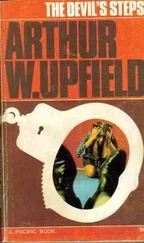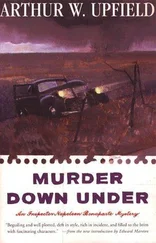Arthur Upfield - Sands of Windee
Здесь есть возможность читать онлайн «Arthur Upfield - Sands of Windee» весь текст электронной книги совершенно бесплатно (целиком полную версию без сокращений). В некоторых случаях можно слушать аудио, скачать через торрент в формате fb2 и присутствует краткое содержание. Жанр: Классический детектив, на английском языке. Описание произведения, (предисловие) а так же отзывы посетителей доступны на портале библиотеки ЛибКат.
- Название:Sands of Windee
- Автор:
- Жанр:
- Год:неизвестен
- ISBN:нет данных
- Рейтинг книги:3 / 5. Голосов: 1
-
Избранное:Добавить в избранное
- Отзывы:
-
Ваша оценка:
- 60
- 1
- 2
- 3
- 4
- 5
Sands of Windee: краткое содержание, описание и аннотация
Предлагаем к чтению аннотацию, описание, краткое содержание или предисловие (зависит от того, что написал сам автор книги «Sands of Windee»). Если вы не нашли необходимую информацию о книге — напишите в комментариях, мы постараемся отыскать её.
Sands of Windee — читать онлайн бесплатно полную книгу (весь текст) целиком
Ниже представлен текст книги, разбитый по страницам. Система сохранения места последней прочитанной страницы, позволяет с удобством читать онлайн бесплатно книгу «Sands of Windee», без необходимости каждый раз заново искать на чём Вы остановились. Поставьте закладку, и сможете в любой момент перейти на страницу, на которой закончили чтение.
Интервал:
Закладка:
Of the hundred-and-odd fires that Bony had superficially examined, this particular site had one peculiarity. It had been a large fire, and the reason of that might have been that more than one carcass had been burned there. On the other hand, Bony did not exclude the possibility that the charred remains of a human body might lie below the charred remains of a kangaroo. A second fire might have been lit over the site of the first.
Very carefully he removed the sand that had drifted round and over this fire-site, proclaimed by a kangaroo’s hind-foot. One by one he removed a quantity of bones by feeling for them in the loose combination of sand and ash. Satisfied that he had recovered all that the fire had not consumed-and ordinary fire consumes very few bones-he carefully sorted them and eventually obtained proof that all belonged to the bodies of three kangaroos.
A further fact he discovered was that the wood which burned the carcasses had not been just thrown on them and fired. Jeff Stanton’s condition had been carried out conscientiously, for Dot and Dash had laid a bed of wood to make the burn more thorough.
Now with great care Bony began to put the ash and sand mixture through his sieve. The residue remaining from each sieve-load he emptied on a chaff-bag, and when he was satisfied that the whole of the fire-site had passed through the sieve or lay on the bag, he paused in his labours and began making and rolling a cigarette.
With the most interesting section of the examination before him, Bony smoked complacently and visualized the scene of the killing of Marks. The act committed, it was at once urgently necessary to dispose of the body. Fire was the easiest and most practicable method. There were no disused mine-shafts down which to throw a body and then explode over it a few tons of earth and rocks. There was no steam power on Windee, no big steam boiler to drive the shearing machinery, no big boiler furnace to incinerate a human body. All Windee power plants were petrol-driven.
There was to be taken into consideration, however, the probability that the murderer or murderers of Marks might have scooped a hole anywhere in that vast region of sand and simply buried the victim, certain that the first windstorm would wipe out all tracks. That method of disposing of the body would naturally occur to the average mind, especially the mind of a killer who was a new-chum to the bush.
This theory, however, was discounted by two facts. Not one of the fish in Bony’s net was a new-chum, and not one fish was there who did not know that, although the first windstorm would obliterate all tracks, there was the certainty that a future windstorm would blow the sand from the body and expose it. To obviate this danger the murderer might have taken the body by truck or car from the scene of the crime and buried it in hard ground on the great plain, or somewhere near the hills.
If that were so, Bony’s task would be infinitely greater, but the hangman’s rope for the murderer would be infinitelymore sure. He was not safe whilst the body existed in whole or in part, and, whilst Bony had so far nothing tangible on which to base his belief, he did believe that the body no longer existed, in whole at least. Ludbi had known, and Moongalliti knew, the killer of Marks. The killer, therefore, was absolutely in their hands. They would blackmail him for even a pound of tea, and, knowing that their demands would inevitably increase, the killer would have vanished before then if he were not absolutely secure from blackmail, even secure from their accusation, in the knowledge that no body existed. No one had left Windee since Marks had disappeared. Neither Moongalliti nor Ludbi had come into any coveted possession, such as good clothes or any of the hundred-and-one trinkets of which a blackfellow dreams. And, given the chance, the aboriginal becomes a front-rank expert at blackmailing.
Bony extinguished the cigarette and put it in a pocket before drawing the bag of sieve residue to him. Every piece of matter he examined with his keen eyes, finally to lay it down on his other side. Most of the material was plain charcoal. There was a quantity of blackened pieces of furred skin and five small bones that he decided were knuckle-bones. Since a kangaroo’s paw is five-fingered and similar in shape to the human hand, and since many kangaroos have paws almost as large as the human hand, Bony considered that these bones came from kangaroos’ paws. To be sure on that point he pocketed them with the intention of sending them to the Research Department at Headquarters.
The pile of seeming rubbish on the bag was growing appreciably less. Still, there might yet be evidence that something more than kangaroos had been burned. Marks’s teeth had been gold-filled, and, although the fire would have sundered the gold from its setting of bone, its temperature would not have been high enough to melt the gold. And then he came on melted metal, and his knife proved it lead. It had run into irregular flat cakes. He found three such cakes of lead, and knew them once to have formed bullets that had killed the burned kangaroos. From that he knew it was Dot who had shot those animals, for Dot used a. 44 Winchester carbine firing a lead bullet, and Dash always used a. 22 Savage firing a soft-nosed nickel-plated bullet.
The refuse not yet examined was becoming a very small collection, but to the very end Bony persevered. He had concluded that his work was fruitless, yet he felt no disappointment, for there were other avenues to be explored, when he came upon a single blackened boot-sprig, a boot-nail less than half an inch in length. Hurriedly he went through the remainder. It gave him nothing of significance. His reward for all his labour that afternoon was a single little boot-nail.
The nail proved that something in addition to kangaroo carcasses had been burned there.
Quite slowly, smiling radiance came to Bony’s face.
Chapter Twenty-one
At the Source of Life
SUMMER’S FIRST heat-wave found Dot and Dash at Carr’s Tank, twenty-two miles south of Range Hut, and lying at the west foot of the ranges. The tank was a great square earth excavation from which thirty-thousand cubic yards of mullock had been taken by bullock-drawn scoops. The mullock formed a rampart, and through this rampart cement pipes conducted the water from a shallow creek-when water flowed in it-beginning in the hills.
Wholly enclosing tank and banks was a six-wire fence, but so numerous were the kangaroos that hardly one strand of wire remained taut. With no difficulty whatsoever they climbed through the fence to drink at the dam in preference to drinking at the man-made sheep-trough a hundreds yards out, and kept filled by a windmill.
Still farther away was an erection of corrugated iron, hessian bags, and flattened petrol-tins, which served as a kind of house for two stockmen. This sort of house substitute was less in evidence on Windee than on the great majority of Australian stations. There exists an Act that requires the squatter to house his men in enlarged iron boxes, also an Act requiring him to use poison-carts to destroy rabbits. However, since no one lives in the bush with the intention of settling there, but rather to make a cheque and then settle elsewhere, the want of any degree of comfort is a matter of indifference.
The two stockmen and the partners were having an early dinner, since the latter had to be at their places at the dam before sundown. In spite of the terrific heat in the interior of the hut the four men appeared to enjoy eating, seeming hardly conscious of the perspiration that ran from them, brought out by the scalding hot tea drunk from tin pint pannikins. The wind, gusty and hot, rattled the iron sheets nailed to the framework of the structure, and sometimes thickened the atmosphere with fine red dust. Countless flies hummed and settled in eyes and on bare necks and arms. That day the temperature in the shade at Windee was from 102° to 112°. At Carr’s Tank there was no shade much for a distance of fully a mile in any direction.
Читать дальшеИнтервал:
Закладка:
Похожие книги на «Sands of Windee»
Представляем Вашему вниманию похожие книги на «Sands of Windee» списком для выбора. Мы отобрали схожую по названию и смыслу литературу в надежде предоставить читателям больше вариантов отыскать новые, интересные, ещё непрочитанные произведения.
Обсуждение, отзывы о книге «Sands of Windee» и просто собственные мнения читателей. Оставьте ваши комментарии, напишите, что Вы думаете о произведении, его смысле или главных героях. Укажите что конкретно понравилось, а что нет, и почему Вы так считаете.
